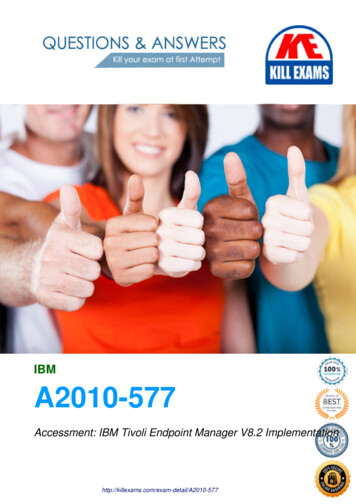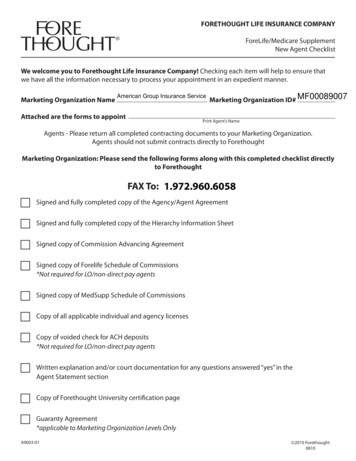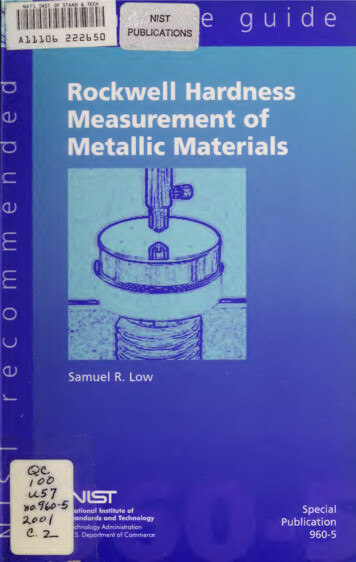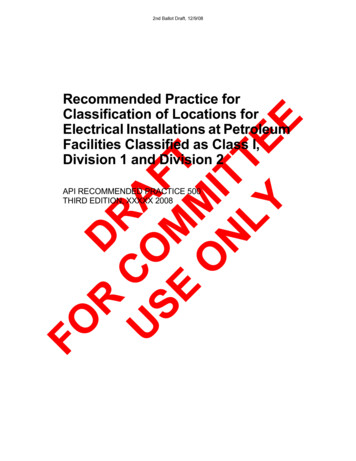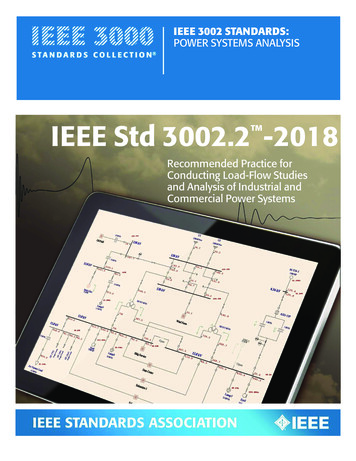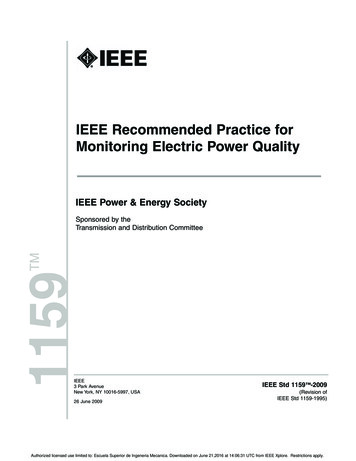
Transcription
API RECOMMENDED PRACTICE 577 FIRST EDITION, OCTOBER 2004Welding Inspection and Metallurgy1 ScopeAPI 577 provides guidance on welding inspection pertaining to fabrication and repair of refinery and chemicalplant equipment and piping and to aid the inspector in fulfilling their role implementing API 510, API 570, API Std.653 and API RP 582.API 577 does not require all welds to be inspected or the specific techniques to be used. A welding engineershould be consulted on any critical, specialized or complex welding issues.2 Reference Codes and StandardsMany codes and standards are referenced in API 577 users should always insure they have the most recentrevision available or the specific revision dictated by the contract.API DocumentsAPI 510- Pressure Vessel Inspection CodeAPI 577- Piping Inspection CodeAPI RP 578- Material Verification Program for New and Existing Alloy Piping SystemsAPI RP 582- Recommended Practice, Supplementary Welding Guidelines for Chemical, Oil, and GasIndustriesAPI Std. 570- Welded Steel Tanks for Oil StorageAPI Std. 653- Tank Inspection, Repair, Alteration, and ReconstructionAPI Publ. 2201- Procedures for Welding or Hot Tapping on Equipment in ServiceASME DocumentsB31.3 Process PipingBPV Code Section V, Nondestructive ExaminationBPV Code Section VIII, Rules for Construction of Pressure VesselsBPV Code Section IX, Qualification Standard for Welding and Brazing (WPS, BPS, Welder, Brazer, Operator)ASNT DocumentsACCP- Central Certification ProgramASNT-TC-1A- Personnel Qualification and Certification in Nondestructive TestingASNT-CP-189- Standard for Qualification and Certification of Nondestructive Testing PersonnelAWS DocumentsAWS A2.4- Standard Symbols for Welding, Brazing, and Nondestructive ExaminationAWS A3.0- Standard Welding Terms and DefinitionsAWS A5.1 thru 5.34- Series of Filler Metal SpecificationsAWS B1.10- Guide for the Nondestructive Inspection of WeldsOther documents are recommended for study3 Terms and DefinitionsThe following definitions apply for the purposes of this publication:Actual throat: The shortest distance between the weld root and the face of a fillet weld.Air carbon arc cutting (CAC-A): A carbon arc cut-ting process variation that removes molten metal with a jet of air.Arc blow: The deflection of an arc from its normal path because of magnetic forces.Arc length: The distance from the tip of the welding electrode to the adjacent surface of the weld pool.
Arc strike: A discontinuity resulting from an arc, consisting of any localized re-melted metal, heat-affected metal,or change in the surface profile of any metal object.Arc welding (AW): A group of welding processes that produces coalescence of work pieces by heating them withan arc. The processes are used with or without the application of pressure and with or without filler metal.Autogenous weld: A fusion weld made without filler metal.Back-gouging: The removal of weld metal and base metal from the weld root side of a welded joint to facilitatecomplete fusion and complete joint penetration upon subsequent welding from that side.Backing: A material or device placed against the back-side of the joint, or at both sides of a weld in welding, tosup-port and retain molten weld metal.Base metal: The metal or alloy that is welded or cut.Bevel angle: The angle between the bevel of a joint member and a plane perpendicular to the surface of themember.Burn-through: A non-standard term for excessive visible root reinforcement in a joint welded from one side or ahole through the root bead. Also, a common term used to reflect the act of penetrating a thin component withthe welding arc while hot tap welding or in-service welding.Constant current power supply: An arc welding power source with a volt-ampere relationship yielding a smallwelding current change from a large arc voltage change. (SMAW/GTAW)Constant voltage power supply: An arc welding power source with a volt-ampere relationship yielding a largewelding current change from a small voltage change. (GMAW/FCAW)Crack: A fracture type discontinuity characterized by a sharp tip and high ratio of length and width to opening displacement.Defect: A discontinuity or discontinuities that by nature or accumulated effect (for example total crack length)render a part or product unable to meet minimum applicable acceptance standards or specifications. The termdesignates rejectability.Direct current electrode negative (DCEN): The arrangement of direct current arc welding leads in which theelectrode is the negative pole and workpiece is the positive pole of the welding arc. Commonly known as straightpolarity.Direct current electrode positive (DCEP): The arrangement of direct current arc welding leads in which theelectrode is the positive pole and the workpiece is the negative pole of the welding arc. Commonly known asreverse polarity.Discontinuity: An interruption of the typical structure of a material, such as a lack of homogeneity in itsmechanical, metallurgical, or physical characteristics. A dis-continuity is not necessarily a defect.Distortion: The change in shape or dimensions, temporary or permanent, of a part as a result of heating orwelding.Filler metal: The metal or alloy to be added in making a welded joint.Fillet weld size: For equal leg fillet welds, the leg lengths of the largest isosceles right triangle that can be inscribedwithin the fillet weld cross section.Fusion line: A non-standard term for weld interface.Groove angle: The total included angle of the groove between workpieces.
Heat affected zone (HAZ): The portion of the base metal whose mechanical properties or microstructure havebeen altered by the heat of welding or thermal cutting.Heat input: the energy supplied by the welding arc to the workpiece. Heat input is calculated as follows: heatinput (V i)/60v, where V voltage, i amperage, v weld travel speed (in./min.)Hot cracking: Cracking formed at temperatures near the completion of solidification.Inclusion: Entrapped foreign solid material, such as slag, flux, tungsten, or oxide.Incomplete fusion: A weld discontinuity in which complete coalescence did not occur between weld metal andfusion faces or adjoining weld beads.Incomplete joint penetration: A joint root condition in a groove weld in which weld metal does not extendthrough the joint thickness.Inspector: An individual who is qualified and certified to perform inspections under the proper inspection code orwho holds a valid and current National Board Commission.Interpass temperature, welding: In multi-pass weld, the temperature of the weld area between weld passes.IQI: Image quality indicator. “Penetrameter” is another common term for IQI.Joint penetration: The distance the weld metal extends from the weld face into a joint, exclusive of weldreinforcement.Joint type: A weld joint classification based on five basic joint configurations such as a butt joint, corner joint, edgejoint, lap joint, and t-joint.Lack of fusion (LOF): A non-standard term indicating a weld discontinuity in which fusion did not occur betweenweld metal and fusion faces or adjoining weld beads.Lamellar tear: A subsurface terrace and step-like crack in the base metal with a basic orientation parallel to thewrought surface caused by tensile stresses in the through-thickness direction of the base metal weakened by thepresence of small dispersed, planar shaped, nonmetallic inclusions parallel to the metal surface.Lamination: A type of discontinuity with separation or weakness generally aligned parallel to the worked surfaceof a metal.Linear discontinuity: A discontinuity with a length that is substantially greater than its width.Longitudinal crack: A crack with its major axis orientation approximately parallel to the weld axis.Nondestructive examination (NDE): The act of determining the suitability of some material or component for itsintended purpose using techniques that do not affect its serviceability.Overlap: The protrusion of weld metal beyond the weld toe or weld root.Oxyacetylene cutting (OFC-A): An oxygen gas cutting process variation that uses acetylene as the fuel gas.PMI (Positive Materials Identification): Any physical evaluation or test of a material (electrode, wire, flux, welddeposit, base metal, etc.), which has been or will be placed into service, to demonstrate it is consistent with theselected or specified alloy material designated by the owner/user. These evaluations or tests may provide eitherqualitative or quantitative information that is sufficient to verify the nominal alloy composition.Peening: The mechanical working of metals using impact blows.Penetrameter: Old terminology for IQI still in use today but not recognized by the codes and standards.Porosity: Cavity-type discontinuities formed by gas entrapment during solidification or in thermal spray deposit.
Preheat: Metal temperature value achieved in a base metal or substrate prior to initiating the thermal operations.Recordable indication: Recording on a data sheet of an indication or condition that does not necessarily exceedthe rejection criteria but in terms of code, contract or procedure will be documented.Reportable indication: Recording on a data sheet of an indication that exceeds the reject flaw size criteria andneeds not only documentation, but also notification to the appropriate authority to be corrected. All reportableindications are recordable indications but not vice-versa.Root face: The portion of the groove face within the joint root.Root opening: A separation at the joint root between the workpieces.Shielding gas: Protective gas used to prevent or reduce atmospheric contamination.Slag: A nonmetallic product resulting from the mutual dissolution of flux and nonmetallic impurities in somewelding and brazing processes.Slag inclusion: A discontinuity consisting of slag entrapped in the weld metal or at the weld interface.Spatter: The metal particles expelled during fusion welding that do not form a part of the weld.Tack weld: A weld made to hold the parts of a weldment in proper alignment until the final welds are made.Throat theoretical: The distance from the beginning of the joint root perpendicular to the hypotenuse of thelargest right triangle that can be inscribed within the cross-section of a fillet weld. This dimension is based on theassumption that the root opening is equal to zero.Transverse crack: A crack with its major axis oriented approximately perpendicular to the weld axis.Travel angle: The angle less than 90 degrees between the electrode axis and a line perpendicular to the weld axis,in a plane determined by the electrode axis and the weld axis.Tungsten inclusion: A discontinuity consisting of tungsten entrapped in weld metal.Undercut: A groove melted into the base metal adjacent to the weld toe or weld root and left unfilled by weldmetal.Underfill: A condition in which the weld joint is incompletely filled when compared to the intended design.Welder certification: Written verification that a welder has produced welds meeting a prescribed standard ofwelder performance.Welding: A joining process that produces coalescence of base metals by heating them to the weldingtemperature, with or without the application of pressure or by the application of pressure alone, and with orwithout the use of filler metal.Welding engineer: An individual who holds an engineering degree and is knowledgeable and experienced in theengineering disciplines associated with welding.Weldment: An assembly whose component parts are joined by welding.Weld joint: The junction of members or the edges of members which are to be joined or have been joined bywelding.Weld reinforcement: Weld metal in excess of the quantity required to fill a joint.Weld toe: The junction of the weld face and the base metal.
4 Welding Inspection4.1 GeneralWelding inspection includes much more than visual inspection or non-destructive examination of the completedweld. Other issues are important, such as review of specifications, joint design, cleaning procedures, thedevelopment and qualification of welding procedures and welder qualification.Welding inspection activities can be separated into three stages corresponding to the welding work process. Tasks performed prior to welding Tasks performed during welding Tasks performed upon completion of welding4.2 Tasks performed prior to welding1. Review drawings, standards, codes, and specifications2. Review requirements for the weldment with the personnel involved3. Review the WPS(s) and welder performance qualification record(s) (WPQ) to assure they are acceptablefor the work.4. Confirm the NDE examiner(s), procedure(s) and equipment of the inspection organization areacceptable for the work.5. Confirm welding equipment and instruments are calibrated and operate.6. Confirm heat treatment and pressure testing procedures and associated equipment are acceptable.7. Ensure all filler metals, base materials, and backing ring materials are properly marked and identifiedand if required, perform PMI to verify the material composition.8. Confirm weld preparation, joint fit-up, and dimensions are acceptable and correct.9. Confirm the preheat equipment and temperature.10. Confirm electrode, filler wire, fluxes, and inert gases are as specified and acceptable.4.3 Tasks performed during welding1. Establish a quality assurance and quality control umbrella with the welding organization.2. Confirm welding parameters and techniques are supported by the WPS and WPQ.3. Complete physical checks, visual examination, and in-process NDE.4.4 Tasks performed upon completion of welding1. Verify post-weld acceptance, appearance and finishing of the welded joints.2. Verify NDE is performed at selected locations and review examiner’s findings.3. Verify post-weld heat treatment is performed to the procedure and produces acceptable results.4. Verify pressure test is performed to the procedure.5. Perform a final audit of the inspection dossier to identify inaccuracies and incomplete information.4.5 Non-conformances and DefectsAt any t
API RECOMMENDED PRACTICE 577 FIRST EDITION, OCTOBER 2004 . Welding Inspection and Metallurgy . 1 Scope . API 577 provides guidance on welding inspection pertaining to fabrication and repair of refinery and chemical plant equipment and piping and to aid the inspector in fulfilling their role implementing API 510, API 570, API Std. 653 and API RP 582. API 577 does not require all welds to
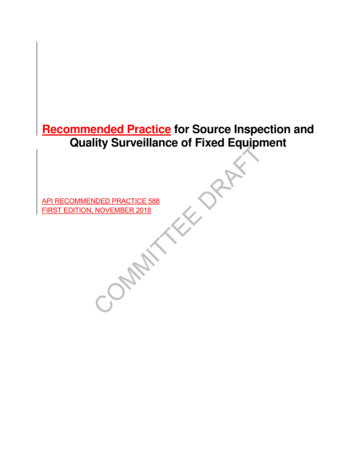
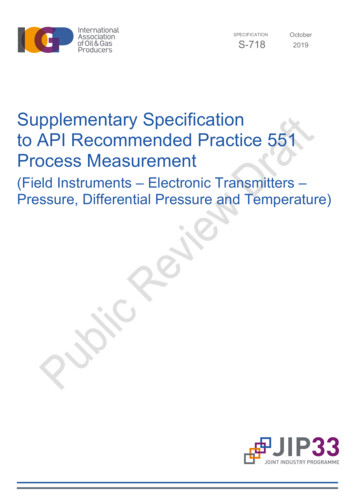
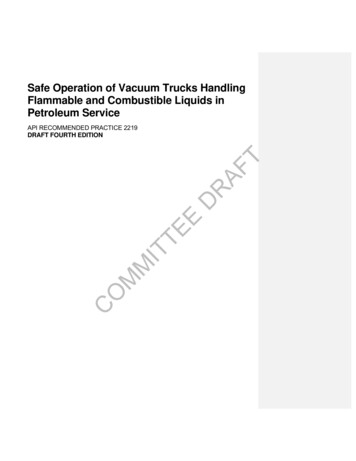
![API Ballot: [Ballot ID] – API 510 & API 570, Deferrals, Rev05](/img/5/api510andapi570deferralsrev5.jpg)

